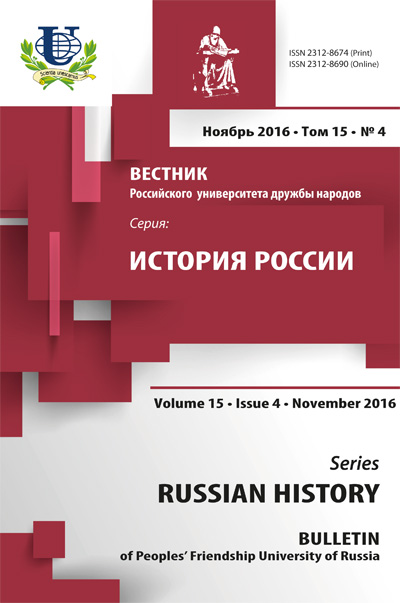SOUTH OSSETIA'S INDUSTRY IN 1920-1940 OF THE 20TH CENTURY
- Authors: Tadtaev T.V.1
-
Affiliations:
- Tibilov South-Ossetian State University
- Issue: Vol 15, No 4 (2016)
- Pages: 29-38
- Section: ARTICLES
- URL: https://journals.rudn.ru/russian-history/article/view/15294
- Retraction date: 27.11.2017
- Retraction reasons description:
The reason for the article retraction is redundant publication: Tadtaev T.V. Economic Development of South Ossetia in the Period of Soviet Power. Vestnic Moscow City University. Series: Historical Studies, no. 4 (2015): 67−79.
This article has been retracted (i.e. withdrawn from the press) by the editor (Minutes of a Meeting of the editorial board of the Journal № 3 held on 27 November, 2017) with permission of the publisher.
Cite item
Full text / tables, figures

Abstract
The article considers the industrial development of the South Ossetian Autonomous Region within the Georgian SSR in the 1920-1940s. The author sets the task to find out how the industry originated in South Ossetia, to define its role in the economic and social development of South Ossetia, to establish and reveal the full potential of the Republic, to conduct a comparative analysis of the development of the industry in the past and the present. Particular attention is paid to the factors which were constraining the industrial development in the region, including the policy of the Georgian authorities in Tbilisi. The author has come to the conclusion that industrialization of South Ossetia was not implemented. It was caused by the fact thatthe economy was mainly determined by the desire of the Georgian authorities. All this strongly inhibited the development of South Ossetia. It is confirmed by the fact that out of 10 industrial enterprises in 1933 (a sawmill, a furniture factory, charcoal "beta" were the most important among them) were in charge of Georgia’s “Lestrest” and “Gruzpromsoyuz” with only 129.4 thousand rubles of gross output and the sawmill did not have any gross output at all. It was clearly stated in the decision of the Bureau of the Central Committee of the Communist Party of Georgia in 1934 that South Ossetia was economically the most backward compared with all the republics and regions in the Union of the Transcaucasian Federative Socialist Republics (among them - the Azerbaijan SSR, the Armenian SSR, the Georgian SSR). In the following years the situation did not improve. The Georgian authorities continued their previous policy by means of economic levers. Tbilisi artificially constrained the industrial development of South Ossetia, reduced the standard of living of Ossetians and thus forced them to leave in search of work, study, life, etc.
About the authors
Taimuraz Valer'evich Tadtaev
Tibilov South-Ossetian State University
Email: tadtai@mail.ru
Moscow St., 8, 100001, Tskhinval, the Republic of South Ossetia
References
















